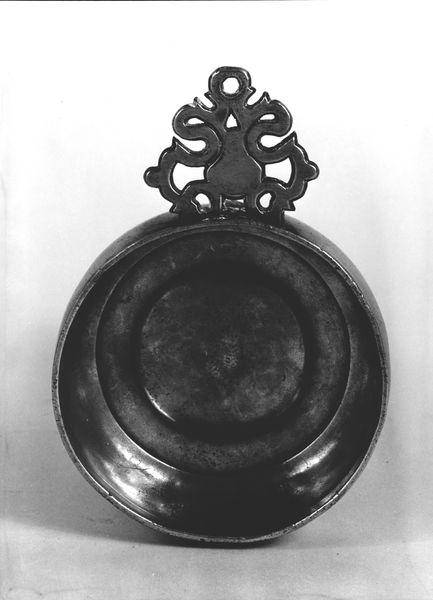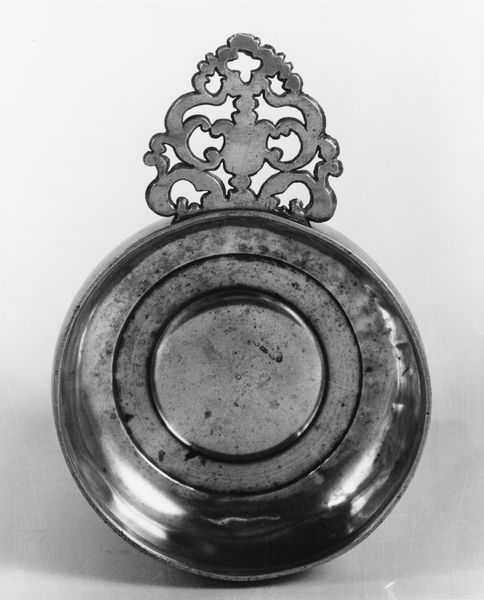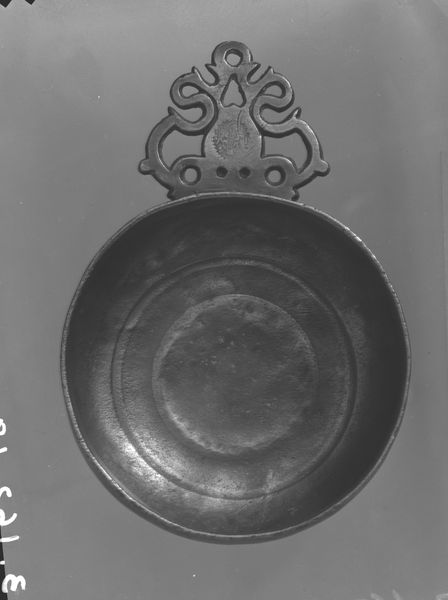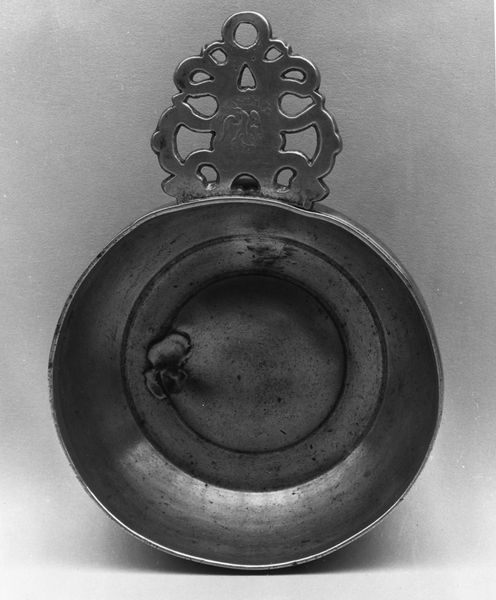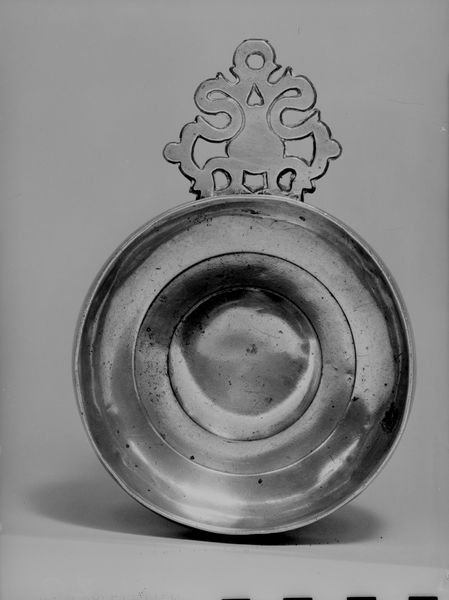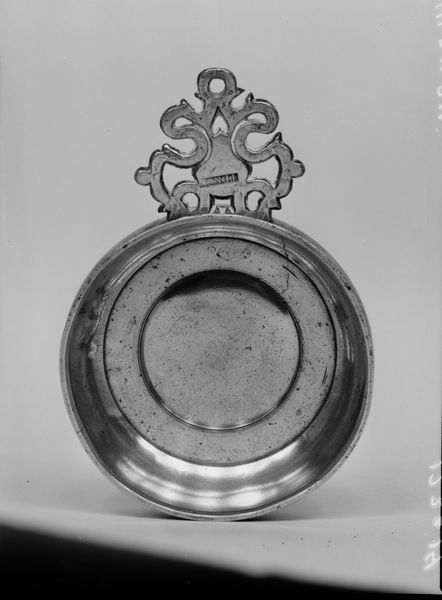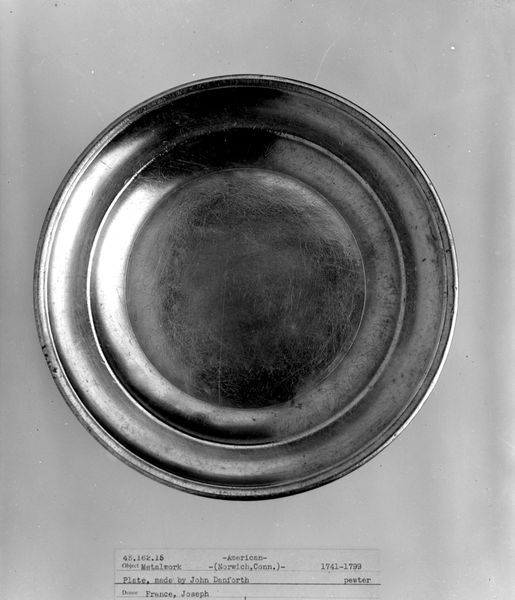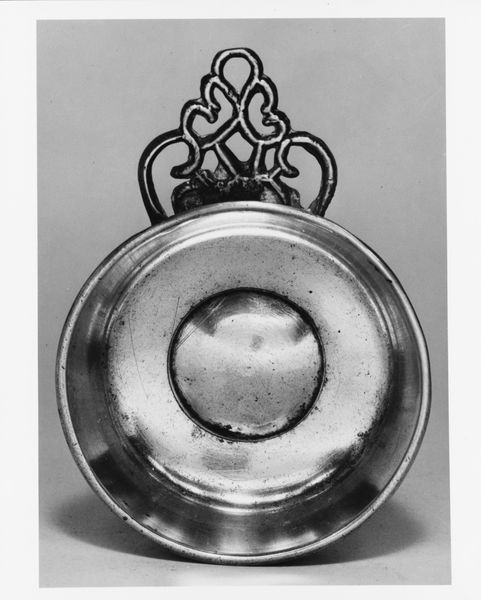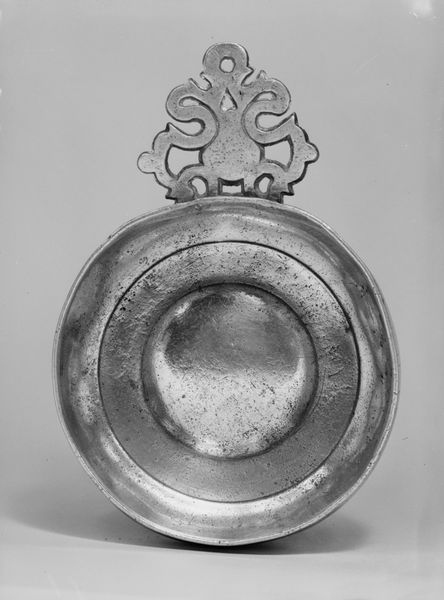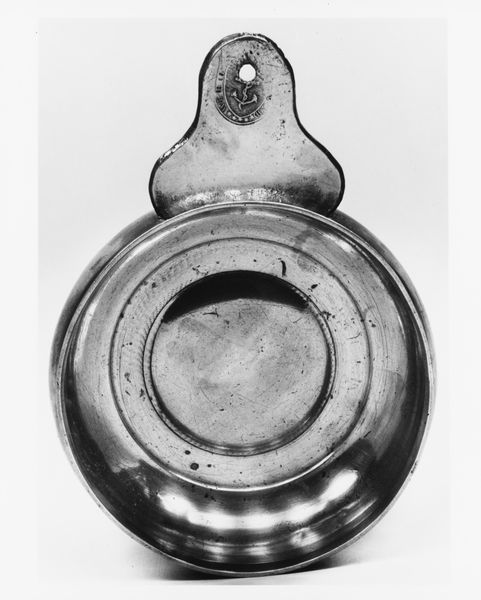
metal, sculpture
metal
sculpture
sculpture
monochrome
monochrome
Dimensions: 1 3/8 x 6 1/8 x 4 1/8 in. (3.5 x 15.6 x 10.5 cm)
Copyright: Public Domain
Curator: Let's take a moment to look at this porringer crafted by Josiah Danforth, likely between 1821 and 1846. It’s currently held here at the Metropolitan Museum of Art. What’s your initial read of this piece? Editor: Immediately, the interplay of circles strikes me. The bowl's round form contrasts with the decorative handle’s almost frantic ornamentation—spirals contained by rigid geometry. It's a very appealing formal tension. Curator: That tension extends, I think, to the social implications of the object itself. The porringer, though seemingly simple, speaks volumes about colonial New England domestic life and material culture. Think about access, labor, gender… who was being served with this bowl? Whose hands crafted it? Editor: True, context undeniably deepens the work. But if we focus on materiality alone, look at how light glides across the polished metal! Notice the subtly concaving lines within the bowl. It possesses a self-contained world of reflected luminosity. The monochrome palette enhances the play of light, turning utilitarian into beautiful. Curator: The choice of material is telling; metal symbolized status and permanence, but also practicality. It suggests aspirations of stability for a young, still-forming nation, perhaps particularly within households seeking to establish themselves socially. Think about who had access to this. Whose labor generated this? Editor: Right, right. Beyond mere metal, however, the piece employs principles of design and a specific kind of craftsmanship. Semiotically, consider that central emptiness. Isn't it ripe for analysis, symbolizing potential, promise, a yet-to-be-written future contained? Curator: Or consider it reflecting the empty promises frequently given during this era? When we unpack ideas of ownership and privilege during this period, it really makes you consider how it's been handled and cared for over time. Editor: Absolutely. So, viewed through both social context and the formal relationships, one might start to weave multiple interpretations, adding up the work's potential cultural value. Curator: Yes, looking at it now, the interplay of these levels and connections brings this period of domestic life so much more richly to life for me. Editor: And for me, its appeal is simply, this seemingly simple shape and material invites endless fascination, contemplation, and speculation.
Comments
No comments
Be the first to comment and join the conversation on the ultimate creative platform.
